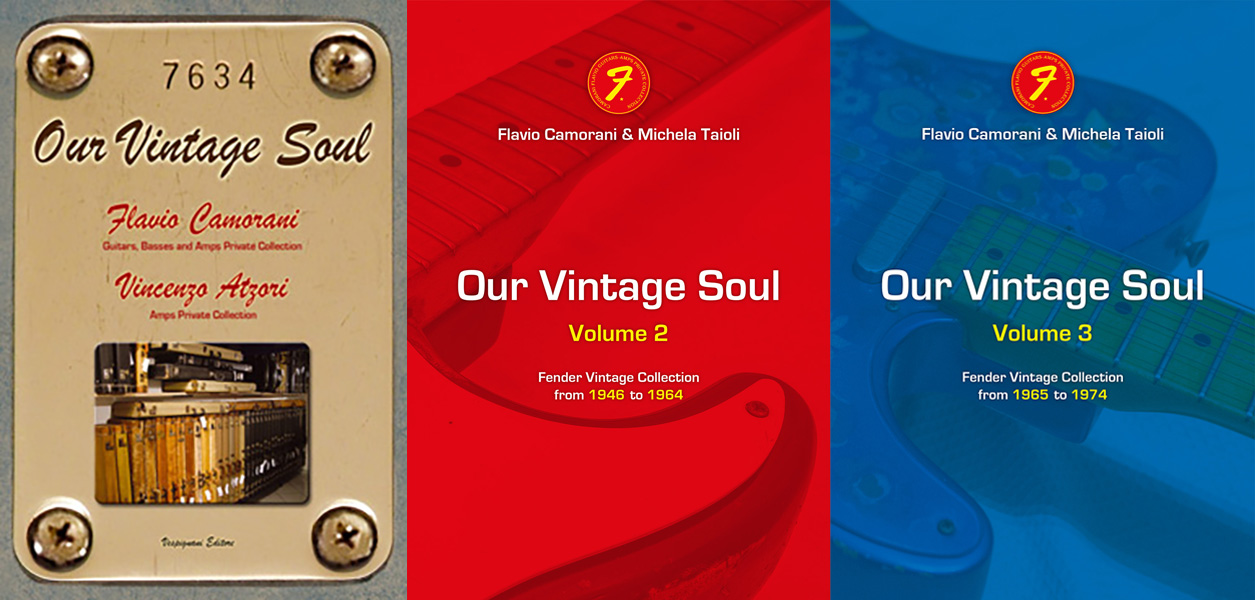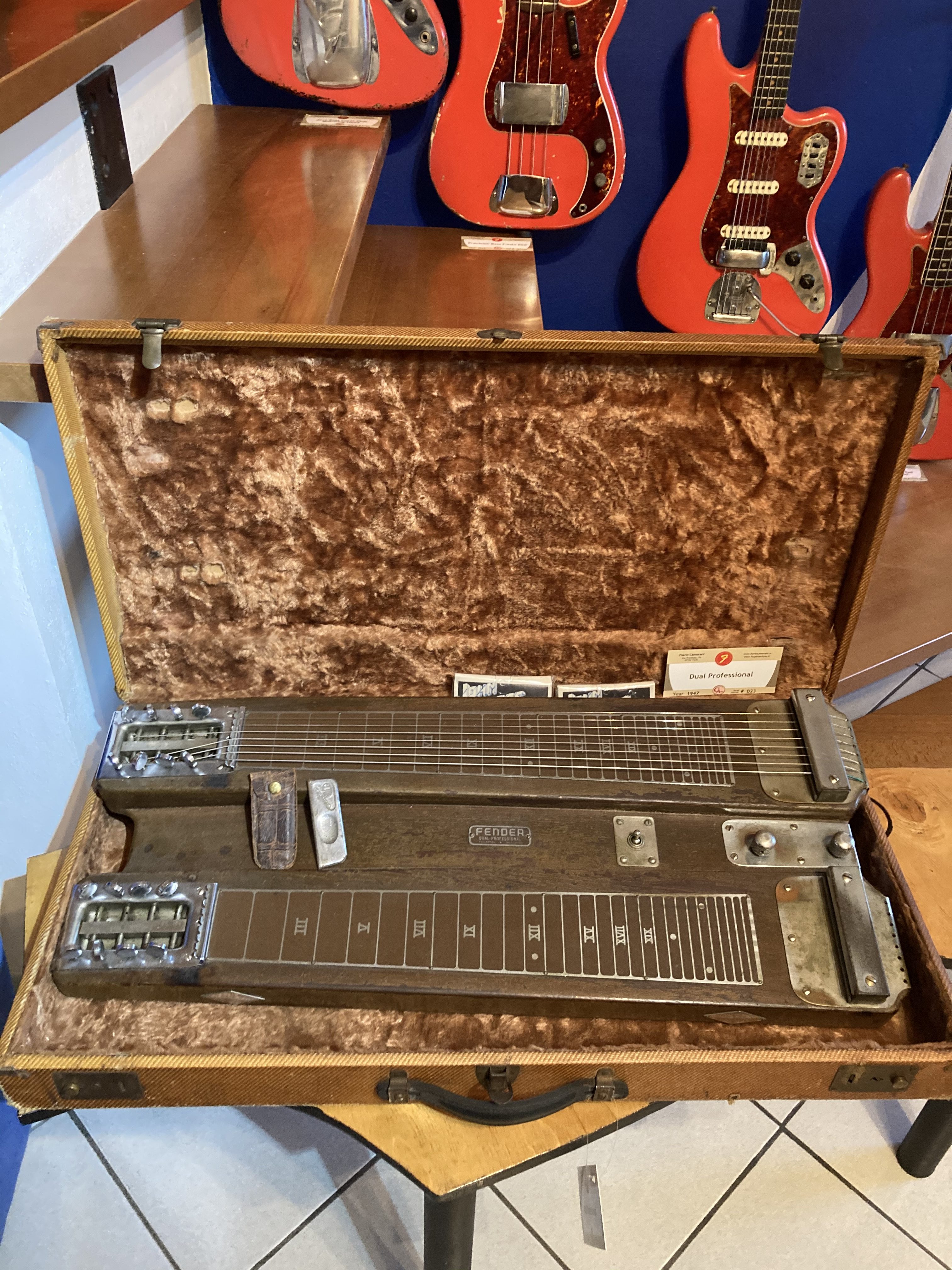FENDER DUAL PROFESSIONAL 1947
Serial Number
# D23Category
Lap SteelAbout This Project
Solidbody instrument built by the same hands of Leo Fender and George Fullerton in 1947 which is the first electric Hawaiian ‘guitar’ born in 1947.
Two glued planks of very heavy hollowed solid mahogany are the base on which the two pickups were applied which saw the metal strings pass through a magnetic winding and was placed on the knees or on a table base to be used.
Its enormous specific heaviness meant that from the immediate initial complaints and criticisms of the albeit wonderful invention by the musicians to whom Leo Fender relied to listen to defects and merits aimed at improving their amps and instruments, meant that the slide guitar itself came from immediately equipped with 4 removable metal supports which, if at rest, were placed inside the case in a special compartment.
This D23 model is still free from the first modification to add the supports, so it appears to be one of the very first ever built. A sort of fairy tale then links me to the acquisition of this instrument, so much so that I am convinced that it was Leo Fender’s spirit that made me receive this heirloom and expose it to the whole world.
When I went to Milan to buy an available Jaguar guitar from a private individual, I saw an old but familiar tweed case in the then owner’s cellar among some furniture and vases/bottles and I asked what it contained.
In response it was revealed to me that the contents were an old non-functioning slide guitar that belonged to my grandfather in the 1950s and, intrigued, I asked to see it. With great emotion I was presented with a relic that had been forgotten for decades, and I asked to be able to buy it, to the amazement of the owner who almost gave it to me just to clear out the cellar. As soon as I got into my car to return home, after a few meters a service taxi entered the road in front of me and I noticed that a sheet/code D23 appeared on the rear window… the exact same serial number as the guitar I had just detected.
Gripped by a sort of dismay and emotion, I was forced to pull over and get out, opening the case and checking that it hadn’t been a dream….the guitar really had the serial D23 effigy.
I don’t usually believe in strange paranormal events, but for me this was and still is truly an inexplicable coincidence. Once home I dismantled the instrument to catalog and photograph it and to my further amazement, when I lifted the enormous and heavy plaque on the bridge, a ‘LEO’ stamping combined with some numbers and D23 came to light. I cannot say with absolute certainty that that signature was applied by the great Leo Fender, but I like to think so also because events lead me to believe that it was not a coincidence!
Info & Pagamenti
-
I libri Our Vintage Soul #1 #2 #3 presentano con un preciso schema cronologico la raffigurazione in fotografia della totale collezione Fender Vintage contenente tutti gli strumenti in colazione standard “solid body” ed almeno un modello di ogni amplificatore per epoca prodotti ed elencati in catalogo ufficiale dalla Fender Factory dal 1946 al 1974.
- Costo: Volume #1 € 49,00 – Volume #2 € 79 – Volume #3 € 79
- Per info: Prisma Melody Club (3388784320) o Contattaci.



